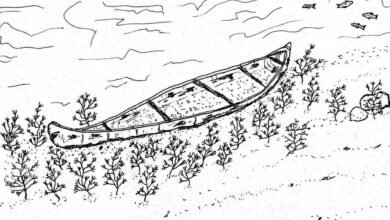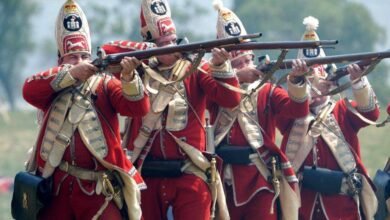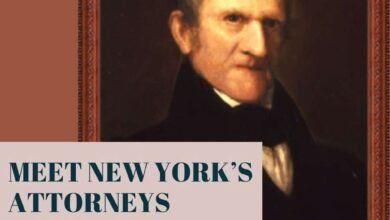Inklings, Echoes & Siftings: 19th Century Black Community Newspaper Reports


 Between 1883 and 1888 H.H. Coleman wrote a series of columns about the activities of Black people in his community of Ithaca, NY. The earliest columns were called “Ithaca and Surroundings.” These notices appeared in African-American newspaper The New York Globe, and were signed Observer.
Between 1883 and 1888 H.H. Coleman wrote a series of columns about the activities of Black people in his community of Ithaca, NY. The earliest columns were called “Ithaca and Surroundings.” These notices appeared in African-American newspaper The New York Globe, and were signed Observer.
The essays moved to the New York Freeman in 1885, were renamed “Ithaca Notes,” and were unsigned. In 1886 the essays appeared under the name “Ithaca Inklings,” often signed, H.H.C.
They appeared along with “Elmira Echoes,” “Owego Occurrences,” Wilkes-Barre Whispers,” “Buffalo Brevities,” “Syracuse Siftings,” “Hartford Happenings,” “Rochester Ripples,” “Niagara Drippings,” Worcester Waifs,” “Lockport Links,” “Pittsfield Pointers,” and “Portsmouth Pencilings.”
These small essays, sometimes called neighborhood notes, were common in most newspapers of the era. The Ithaca Journal carried notices submitted by local correspondents from around the county, including the communities of Lansing, Dryden, Groton, and Newfield. These were intended to give a newspaper reach — that is, to extend its readership beyond the city, to sell newspapers in a wider circle.
The notices in the Black newspapers of the day had the same purpose, but with an interesting difference as they were exceedingly important to Black readers for reasons other than increased circulation. Through these short, 3 to 4 column-inches essays, communities could be in touch with people and events that happened elsewhere, events that were rarely covered, if they were at all, in local newspapers. They connected one small Black community to others in the region.

 “Ithaca Inklings,” and “Rochester Ripples,” announced, as did the other such columns, the births, weddings, and deaths and major life events of people known to the correspondent and to whom the reader might also be related to or know about. They created a community of Black knowledge shared nowhere else.
“Ithaca Inklings,” and “Rochester Ripples,” announced, as did the other such columns, the births, weddings, and deaths and major life events of people known to the correspondent and to whom the reader might also be related to or know about. They created a community of Black knowledge shared nowhere else.
An Ithacan could read about the events in Elmira or Richford Springs or Owego; notices could be sent from one place to another, meetings set, baseball games extolled, and local events could travel in this interesting circle, each relating through the New York City newspaper, radiating across the land.
The items recorded by these local correspondents – people like H.H. Coleman – were not necessarily of great import.
A short column that appeared on August 20, 1887, contained two paragraphs, the first about people coming to Ithaca to see P.T. Barnum’s show.
It also noted that a celebration in Havana (now Montour Falls, NY) “last Wednesday was a success, the city tastefully decorated with bunting and flags. The parade was credible [large enough] and the orator was Geo. A. Johnson” who “spoke for an hour on the two emancipations and was frequently interrupted by applause.”
The second paragraph announced that Ithaca’s Zion AME Church that had been closed for repairs was recently reopened, the auditorium attractive and the altar handsomely decorated. Rev. James Mason officiated, and in the afternoon, there was a sermon by Rev. G. W. Chandler of the Aurora Street M.E. Church that was deemed eloquent.
It also alerted readers that there had been a camp meeting — generally meaning a religious revival — in Spencer that had since closed.
This is a great deal of information unmentioned elsewhere. In another essay published on May 19, 1888, the reader learns of events at the Zion Lyceum, a three-year old organization, the names of those who had spoken, names of the officers given and who had served tea.
We learn also that there would be a leap year bazaar and that white temperance organizations in the city were doing a good job.
We learn about individuals: Richard Reed left for Syracuse to become a porter at the Leland Hotel; Mme. M. Barbour retuned from a visit to Blodget Mills and was staying with Mr. and Mrs. Charles Moore. W. H. Lester, Esq. of Dryden was visiting; Rev. John Thomas passed through the city, and William Woodsin, a graduate of the Ithaca high school in June was pursuing a course of law.
People are mentioned; events celebrated; notices given; the travels of the clergy was noted. The topics of debates were listed, names of songs sung were given, the titles of sermons listed. All this information gets shared with other communities of Black people, and they in turn, write of the events in their own towns.

 These gave Black people of the time a way of connecting, a sense of being in a larger community than the few hundred in one town or another. These notes became a written record. They were alerts about life events and they bound communities of color together.
These gave Black people of the time a way of connecting, a sense of being in a larger community than the few hundred in one town or another. These notes became a written record. They were alerts about life events and they bound communities of color together.
It was H. H. Coleman who performed this service for Ithaca. And he left, for historians, a record of events and of people that can be found nowhere else. This dear man who was so defeated in his own life, has given his era, the people he knew and admired, a historical presence.
So, what can we learn from “Ithaca Inklings”?
New York Globe
March 1, 1884: The Sumner Literary Association of Ithaca is a most successful enterprise in the Empire State; 35 members meet weekly consisting of ministers, barbers, blacksmiths, farmers, and common laborers. Charles Shaw is president.
March 15, 1885: Grand Master and others here to establish the Henry Highland Garnet Lodge of F.A. A. Masons; 22 charter members.
New York Freeman
June 20, 1885: Rev. James E. Mason established the Lyceum several months ago; membership of over twenty.
July 11, 1885 : 1 st anniversary of Sunday School at Wesleyan Church; William E. Johnson opened West End Shaving Parlor at Exchange Hotel
July 18, 1885: Henry Moon opened store. Coffee House opened by Mrs. Nellie Collins & Fred Carlysle.
Sept 19, 1885: Quite a number of our citizens own valuable property. Among the recent purchasers are Messrs. H. Wandworth and J. Johnson.
Nov. 7, 1885: A considerable proportion of our people here seem to think there is extraordinary virtue in societies. Hence, we are abundantly blessed in this particular at present. We have two religious organizations, Zion and Wesleyan Methodists, the Young Men’s Social Club, Sumner Literary Society, Zion Lyceum, Masonic Order, and last evening a meeting was help to organize an Assembly of the Knights of Labor. A person of multiloquatious proclivities remarked to your correspondent the other day that the all absorbing question soon would be, if other contemplated associations were organized “What shall we do to be delivered from a multiplicity of societies.”
There are many, more, small items about people who visited, who was ill, what social event was happening and how people gathered in community.
Thursday evenings were community nights with youngsters reciting poems playing the piano, singing. And debate topics were announced — one in 1885 asked the question: “Which has had greater influence over the community, women or preachers?
There were numerous performances of the Ithaca Colored Quartet and other musical groups. The church on Wheat Street played a central part in gathering people together and displaying community talent.
H. H. Coleman’s essays are greatly significant and provide us with the sort of intimate detail that is difficult to find. While providing a service to his community in the 1880s, he becomes, for us, an accidental historian.
You can learn more about the life of H. H. Coleman in Carol Kammen’s Black Voices in Tompkins County: The 19th Century, published by the Tompkins County Historical Commission (Ithaca, 2023) available through Historic Ithaca, info@historicithaca.
Illustration: John Sengstacke (right), part-owner of the Chicago Defender and nephew to founder Robert Abbott, looks over details of the newspaper in 1942; H.H. Coleman’s “Ithaca and Surroundings,” The New York Globe, March 1, 1884; and Black newspapers being published in 1880 from I. Garland Penn’s The Afro-American Press and its Editors (1891).
Source link




